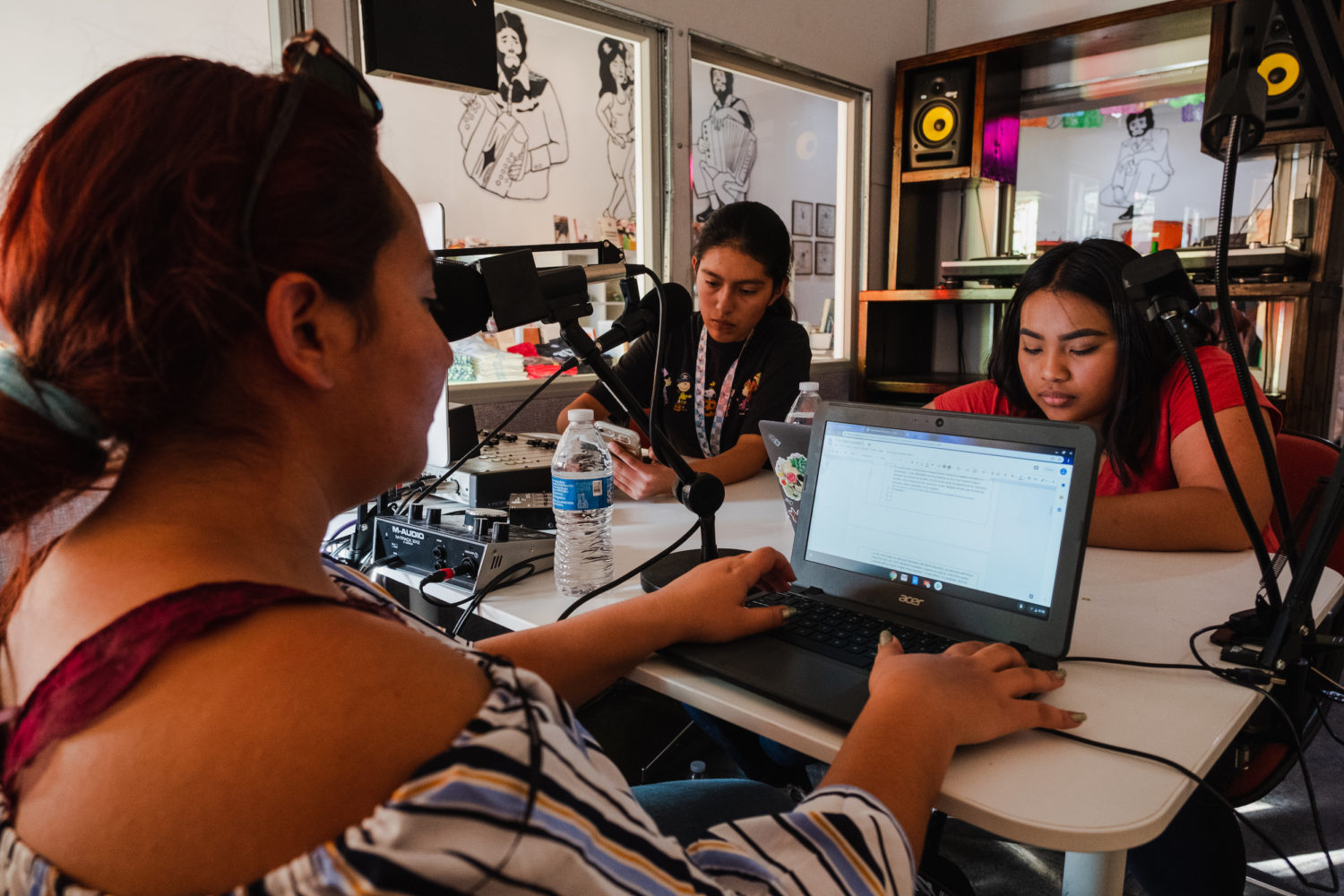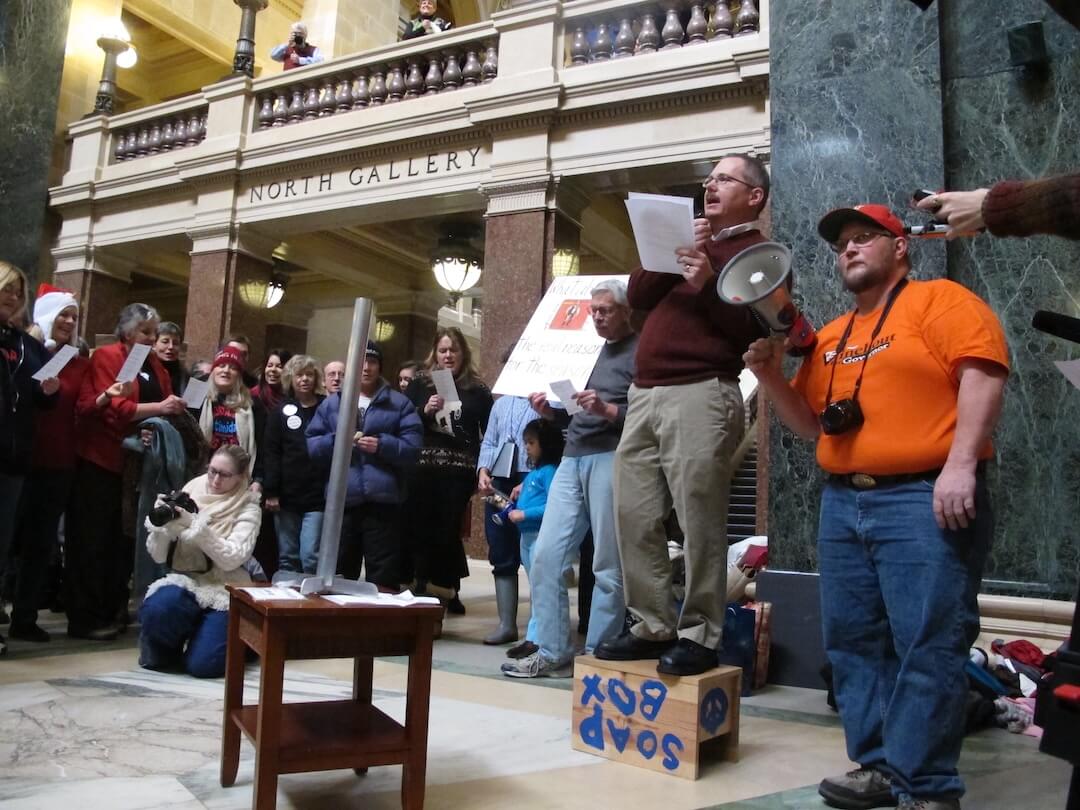Backed with initial pledges of $15 million, the nonprofit Los Angeles Local News Initiative announced its launch Tuesday with a mission to build coverage in the sprawl of underserved neighborhoods and small cities in the nation’s second-largest metro.
The project’s funders and governing board are mainly local, but it is being put together by the American Journalism Project, a five-year-old effort to rebuild local news. It’s the fourth large startup for AJP, joining similar projects in Ohio, Indiana and Houston. AJP has also given grants to more than 40 other local news nonprofits.
The development of the initiative follows AJP’s established playbook, but there is an important difference. Potentially multiple Los Angeles startups will be coming in the future, but for now the project will focus on growing and knitting together existing nonprofits. First of those is the bilingual Boyle Heights Beat, serving a large Hispanic community on the eastern edge of the city that dates back to the 1800s. The Beat has been in business since 2010 and offers a substantial training program for student reporters.
The sequence (as in the other AJP projects) has been:
- Several years of surveying community residents about their unmet news needs. Now the initiative is greenlighted for a next phase with the outline of a plan in place.
- A small five-person board has been named, chaired by Monica Lozano, former editor, publisher and CEO of La Opinión. Another board member, Kevin Merida, was editor of the Los Angeles Times for two and a half years until this January, leaving after a falling out with owner Patrick Soon-Shiong.
- The board, in turn, will hire a CEO and an executive editor, who will oversee hiring journalists and tend to other details, with an eye toward introducing the expansion in Boyle Heights and other added community news projects sometime in 2025. Merida co-chairs the search committee for the editor’s job.
- A lead among more than a dozen philanthropic supporters is the Eli and Edythe Broad Foundation. Broad, who died in 2021 at 87, was a huge funder of arts and other Los Angeles causes. He tried over a long period to buy the Times, but the owner at the time, Tribune Publishing, was unwilling to sell.
- The initiative has already lined up collaborations with nonprofit media partners including Cal Matters for statewide coverage and investigations and public-radio-affiliated LAist for metro news. Each will add to its existing content mix with stories serving a local perspective geared to the new project’s mission.
While the announcement does not criticize the Los Angeles Times directly, it has numerous veiled references to what the initiative’s founders find wrong with the legacy newspaper. Its first sentence says the initiative has been undertaken in response to “drastic losses in local journalism resources.”
AJP has shown a flair for bringing local philanthropy to bear on gaps in metro area news ecosystems — especially with ethnic and lower-income groups who feel ignored by the biggest outlets.
The announcement said the research, including more than 800 people in a target audience, “found that residents lack information focused on important local issues unique to their neighborhoods … and said they felt their perspectives weren’t represented in the media. They wanted more information they could use to become more civically engaged, to stay safe, and to thrive. Angelenos also said they want more accountability reporting focused on their local municipalities.”
AJP’s chief investment officer Michael Ouimette emailed me that the plan to bolster existing outlets instead of launching a big new one was tailored to what they heard from citizens in the planning process. In its report on the launch, the Times noted that Los Angeles County already has 104 news outlets, second only to Chicago’s Cook County.
I see three particular challenges that have popped up in other of AJP’s projects:
- Like any startup (not just in journalism but any business), they need to get over the threshold of gaining recognition for who they are and what they are doing.
- Related, they need to build an audience for their journalism or risk being the proverbial tree that falls unnoticed in a quiet forest.
- Assuming the target communities are not contiguous, how can the startup develop a shared interest in issues? Experiments dating back a decade have shown residents are interested in government but focused on practical matters like garbage collection, potholes and parking. But who in Boyle Heights would care how those are being handled somewhere else 20 miles away?
To the latter point, Ouimette replied:
“Our focus is responding to what we hear from residents — to have a trusted source of local news that serves their community and produces highly relevant information that helps them navigate their daily lives and celebrate what makes their community special.
“As one organization, we’re able to maximize resources focused on reporting in communities and developing products that are relevant to those communities, while sharing the nonreporting services that take a significant amount of budget and time. Block Club Chicago is a great example of how this works in action — its hyperlocal reporting on Chicago’s many diverse communities is providing truly local, on-the-ground coverage to its audiences.”
One of AJP’s strategies, planned for Los Angeles, has been adopting the Documenters approach to cover more local meetings. It sends out lay people with a template for a rudimentary report — both creating civic coverage that’s largely gone missing and raising the initiative’s outlets’ profile.
Separately in an email Tuesday, AJP CEO Sarabeth Berman highlighted a new partnership with The Texas Tribune, with AJP providing $2.75 million to help produce local coverage around the state starting with the Tribune’s hometown, Austin, and of Waco.
Among the unfinished tasks in the coming months is finding a better name for the initiative with more local flavor. For its other metro projects, AJP and its partners have chosen Signal Cleveland (celebrating that the three-color traffic light was invented there), Mirror Indy (because the rearview mirror was invented in Indianapolis) and Houston Landing (named for Allen’s Landing downtown, birthplace of the city).
Correction, Sept. 12, 3:30 p.m.: A previous version of this article misstated the age of the American Journalism Project — it’s five — and how many grants it has given to other local news nonprofits — 40.







